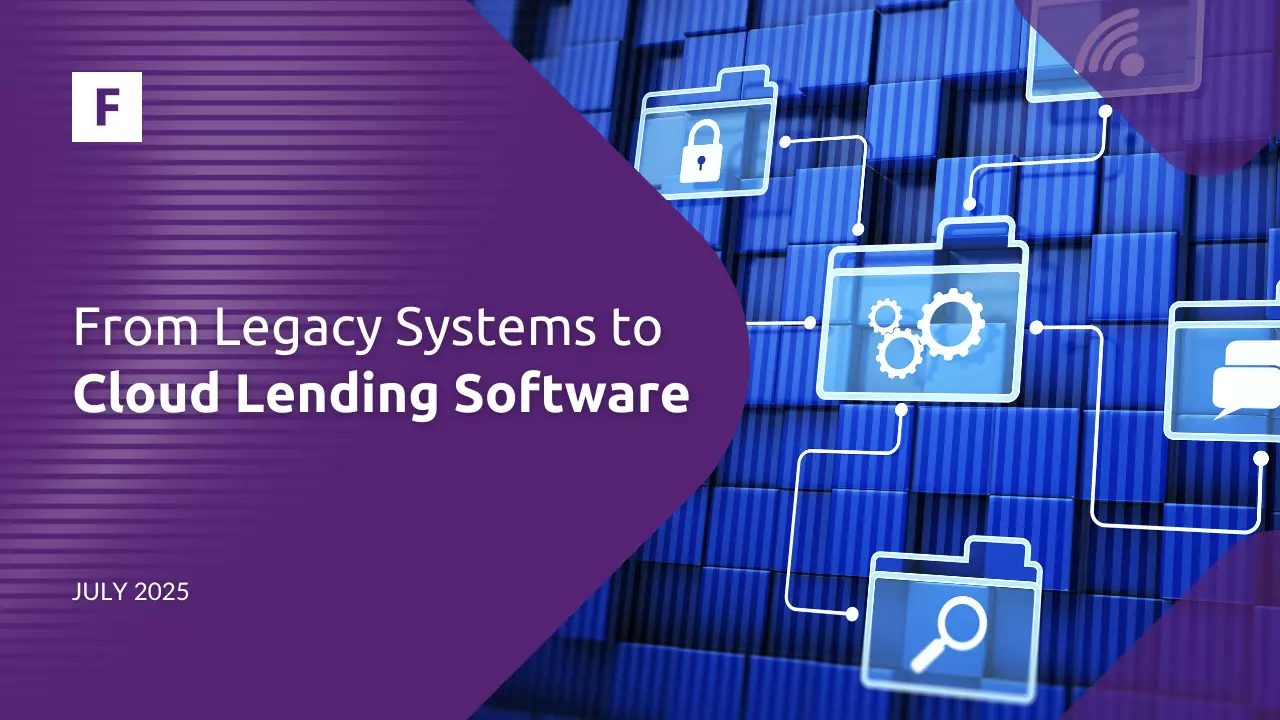Introduction
An automated loan management system is a digital platform that handles the entire loan lifecycle. From eligibility verification to loan origination, processing, and tracking, these systems are designed to streamline and automate processes, making lending easy and efficient.
Who could benefit from an automated loan management system? Essentially, any entity that handles loans - from small and medium-sized enterprises (SMEs) to large financial institutions.
This article will delve into:
- How loan origination systems benefit financial institutions
- The most crucial features of these systems
- How to select the best loan management software for your needs
- The integration of credit scoring and risk assessment in loan applications
- Overcoming challenges and finding solutions in implementing these systems
How Loan Origination Systems Work in Financial Institutions
Types of Loan Origination Systems
There are three main types of loan origination systems - manual, electronic, and hybrid. Manual systems are the traditional form of lending, with physical offices and paper-based applications. Electronic systems, on the other hand, have taken the digital route, with online applications and digital platforms for loan management. Hybrid systems combine the best of both worlds, offering both online and offline services.
The advent of loan management systems has greatly improved the lending experience, revolutionizing the way financial institutions handle loan origination. In-house software development, which was once a costly and time-consuming endeavor, is no longer necessary thanks to the availability of these advanced systems. This shift has not only saved financial institutions substantial resources but has also paved the way for a more streamlined and cost-effective loan origination process.
Enhancing the Lending Experience with a Loan Management System
In today's digital era, where people can effortlessly create bank accounts, execute peer-to-peer transactions, and make credit card transactions using smartphones, it's evident that traditional and intricate banking procedures are no longer suitable. Today's banking customers and borrowers anticipate seamless interactions with financial institutions at their convenience, be it at home, in the workplace, or on the go. Surprisingly, according to a survey by Bain & Company, only a mere 7% of banks have fully embraced online platforms to streamline the entire loan application and approval process.
Consequently, loan management systems serve as the backbone of lending institutions. They streamline the entire process, from the initial application to the final disbursement, and even beyond that, to client and debt management. The advantages of these systems are manifold, and they cater to a wide range of users, from small and medium-sized enterprises (SMEs) to large corporations.
The Crucial Features of a Loan Origination System
One of the most important features of a loan origination system is its ability to manage the entire loan life cycle. This includes customer onboarding, underwriting, disbursements, and client and debt management. But these systems offer more than just loan origination. They also provide third-party integrations with credit bureaus and Know Your Customer (KYC) services, further enhancing their functionality.
In the same report from the survey conducted by Bain & Company, one of the key components that these systems deliver is the possibility to create modular products that can be assembled like LEGO bricks, enabling fast time to market, a high degree of personalization for customers, and reuse through common processes and systems.
Selecting the Right Loan Management Software
Choosing the right loan management software is paramount for any lending institution. The decision should be based on your specific business requirements, the needs of your users, the products you offer, and the locations where you operate. It's also crucial to consider how credit scoring models and risk assessment methods will be integrated, as these play a vital role in decision-making.
Business Requirements: Start by assessing your specific business requirements. Your loan management system should align seamlessly with your company's goals and objectives. Consider factors such as loan volume, the types of loans you offer (e.g., personal loans, mortgages, or business loans), and the regulatory environment in which you operate.
User Needs: It's essential to cater to the needs of your users, both internal and external. Your software should be user-friendly, with an intuitive interface that simplifies the loan origination and servicing process for your customer agents. Training and support for your staff in using the software should also be factored in.
Product Portfolio: Your loan management software should be flexible enough to handle your diverse product portfolio. Whether you offer fixed-rate loans, adjustable-rate mortgages, or other financial products, the software should accommodate these offerings and their unique requirements.
Geographic Reach: If your lending company operates in multiple locations, consider a loan management system that can efficiently manage loans across different regions. It should support multi-currency and multilingual capabilities if necessary, ensuring consistency in operations across various geographic locations.
Integrating Credit Scoring and Risk Assessment
Credit scoring models are integral to loan applications, and they can be seamlessly integrated into a loan management system. Similarly, risk assessment methods play a crucial role in decision-making and can be incorporated into the system.
The first half of this article has provided an overview of what a loan management system is, who can benefit from it, and how it works. In the next part, we'll delve deeper into the challenges and solutions associated with implementing such a system.
For more insights into the world of fintech, visit our blog or learn about our decision engine tool.
Navigating Challenges and Finding Solutions in Loan Management Systems
Common Hurdles and Practical Solutions
Implementing a loan management software isn't without its challenges. Companies often face issues with data migration, system integration, and user training. However, these obstacles can be overcome with careful planning, dedicated resources, and ongoing support.
For instance, data migration can be a complex process, but with a well-planned strategy, you can ensure a smooth transition. Similarly, while integrating the new system with existing platforms may initially seem daunting, with the right technical expertise and support, it can be successfully achieved. Lastly, user training is crucial to ensure that employees can effectively use the system, and this can be addressed through comprehensive training programs and support materials.
The Role of Cyber Safety and Security
In the digital age, cyber safety and security are paramount. A good loan management software should have robust security measures in place to protect sensitive borrower details and ensure compliance with data protection regulations. This includes encryption, secure data storage, and regular security updates.
Leveraging the Power of Automation
Automation is a key feature of loan management systems, and it can significantly streamline loan processing. Routine processes, such as eligibility verification and credit checks, can be automated, saving time and reducing the risk of human error. Moreover, with automatic report generation, lenders can easily track and manage loans, making the lending process more efficient.
To learn more about fintech solutions, check out our products page or read about our core system.
Conclusion
Understanding the intricacies of an automated loan management system is vital for any lender. Whether you're a small business or a large financial institution, these systems can significantly streamline your lending processes, saving you time and resources.
A good automated loan management system is more than just a tool for loan origination. It's a comprehensive solution that handles the entire loan lifecycle, from application to disbursement and repayment. It combines automation, third-party integrations, and a user-friendly interface to simplify lending, making it more efficient and accessible.
Choosing the right loan management software for your needs can be a game-changer. It can transform your lending operations, making them more efficient, secure, and customer-friendly. But it's not just about selecting the right software. Successfully implementing it also requires careful planning, adequate resources, and ongoing support.
To learn more about the power of automated loan management systems, check out these related articles on our blog:
- All You Need to Know About Loan Management Systems
- How to Simplify Lending: Traditional vs Digital
- Unleashing the Power of No-Code Technology
- Let's Talk About Risk: Decision Engine Tool
About Fintech Market
Fintech Market (FTM) offers an all-in-one loan management system for financial service institutions. The platform covers loans, deposits, current accounts, and investments, and incorporates functionalities such as CRM, KYC, risk mitigation, and debt management. FTM's products are available for neobanks, SME loan providers, car leasing enterprises, and buy-now-pay-later providers across the European Union (EU), Mexico, and Indonesia, providing tailored solutions to enhance their performance within the lending software market.







